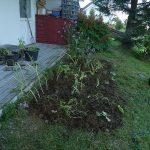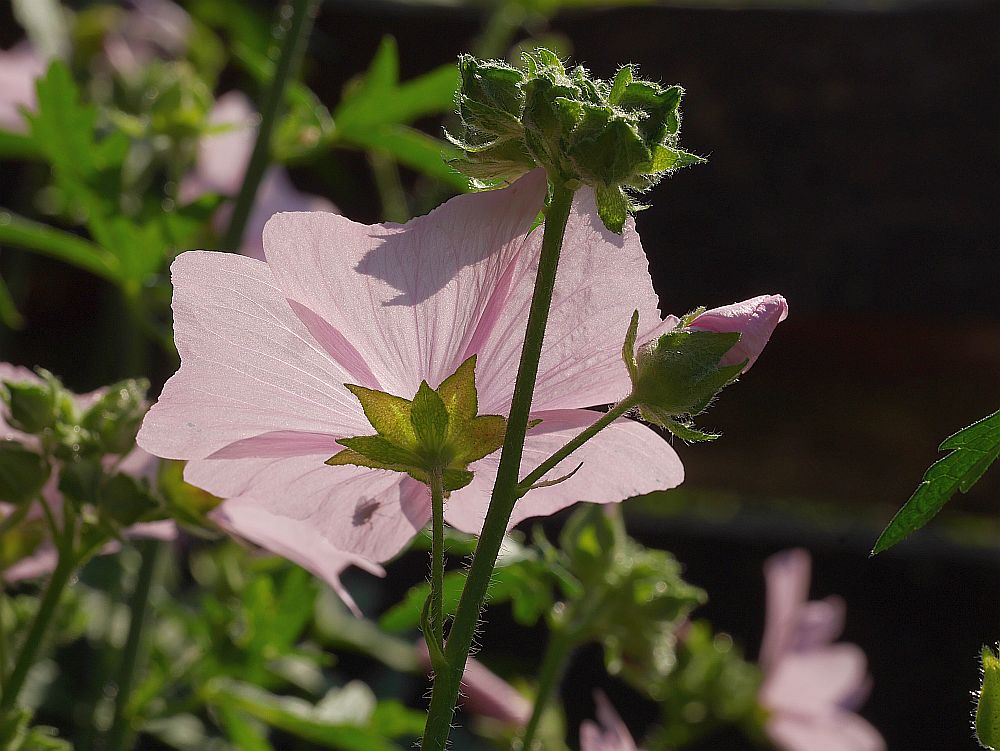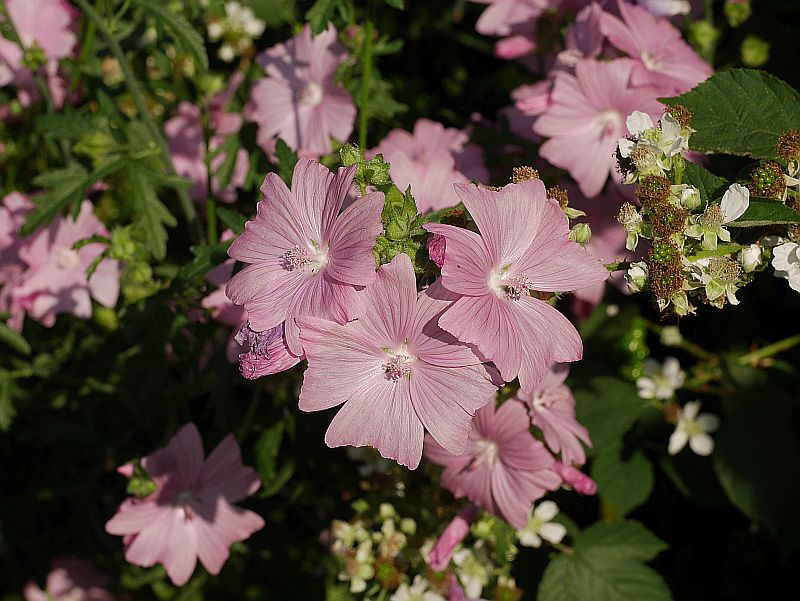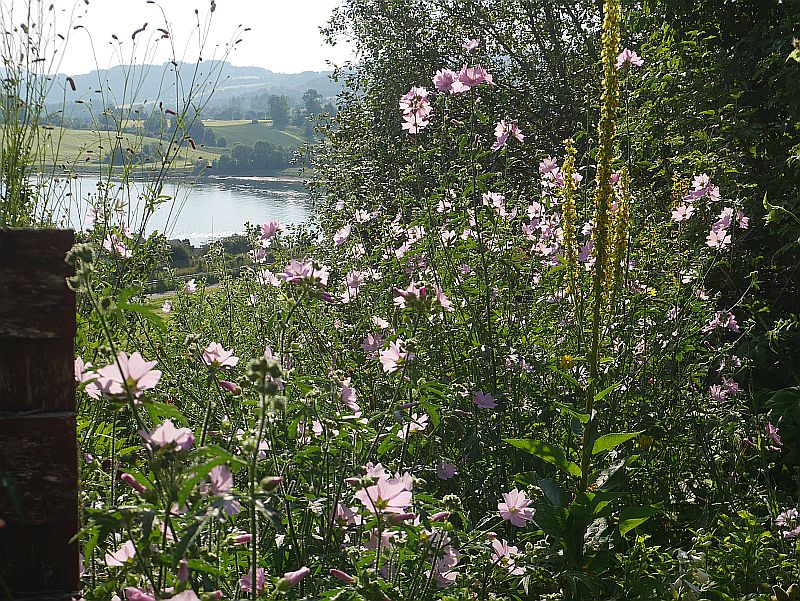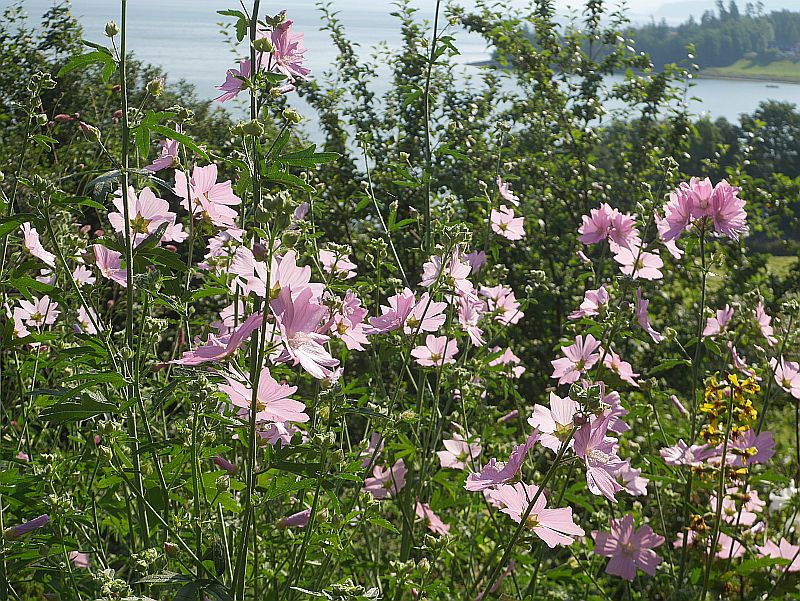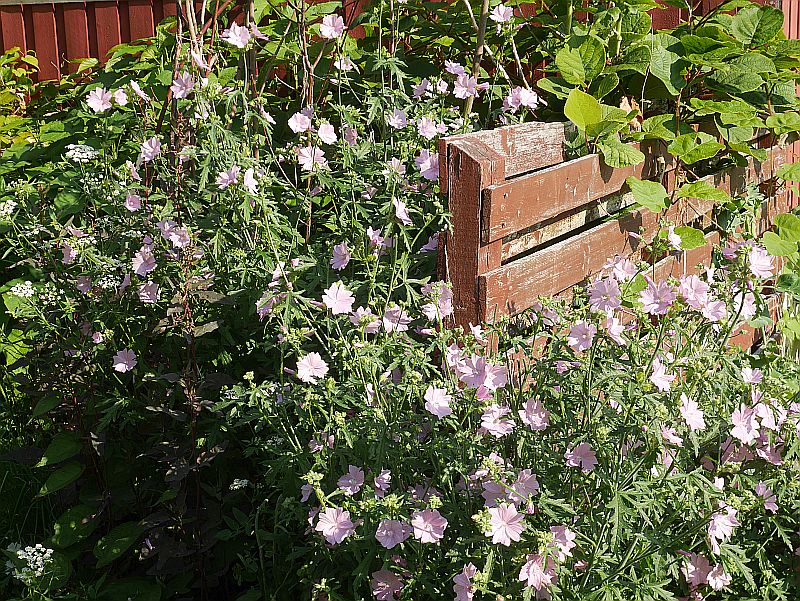28th July 2019 was a great day in the company of some lovely people from a number of different countries (Chile, Finland, Germany, North Carolina in the USA) ….but also some locals…at the Summer Festival Farming in Harmony with Nature at the new Permalin farm, on Grostadveien in Lensvik, which is a little over 1 hour drive from home!
The participants had clearly had a great day learning the local plants and foraging with Ane Marit Willmann of the company Vill Mat who had been there the day before.
I talked about Forest Gardening and attempted but failed again to complete my Around the World in 80 plants talk. This was followed by a quick course in very hot bastard digging (also known as Barstow digging) a new bed so that we could plant 20 odd perennial vegetables from Malvik!
It will be interesting to follow the developments at this fantastic idyllic farm in the years to come!
Thanks for a great day and the great food too!
Monthly Archives: July 2019
Edimental of the Day is Malva alcea
Malva alcea (greater musk-mallow, cut-leaved mallow, vervain mallow or hollyhock mallow / Norw: rosekattost) is a mallow native to southwestern, central and eastern Europe and southwestern Asia, from Spain north to southern Sweden and east to Russia and Turkey. It is easy to confuse with musk mallow (Malva moschata). It is a much larger plant than moschata. My plant is the upright form Malva alcea var. fastigiata and reaches 1.8m, double the height of moschata. I had this for many years, but it was sterile and I suspected it was a hybrid with moschata. It finally died after some 15 years and I sourced new seed through the Scottish Rock Gardening Club seed list in winter 2012-2013. It grew quickly, produced seed and has self-sowed in a few places in the garden, growing well in the half shady conditions my garden provides for. Here it is, filmed from my balcony today:
It is often planted in gardens as it flowers for a long time in summer. It has naturalised in the UK (see https://www.brc.ac.uk/plantatlas/plant/malva-alcea) and also here in Norway there are a number of observations, particularly around Oslo.
This summer, I’ve been using this mallow much more than before as I now have a lot of it and it has replaced moschata in a few places, suggesting that these may be hybrids! This really is one of the most useful perennial vegetables in the summer garden. Along with other mallows you can pick off leaves, young flower buds and flowers over an extended period! I use them in various stir-fry dishes, in soups, on pizza, in quiches and mixed salads!
It is surprisingly not often mentioned as edible in ethnobotanical studies (maybe underreported due to confusion with moschata?). However, a quick search revealed it being used traditionally in Czechoslovakia and Bulgaria!
If I had written my book today, this may well have replaced moschata. I did mention alcea in the book under the account of moschata as follows:
I have less experience with Malva alcea, greater musk mallow, which is, as the English name suggests, a larger plant. It has a similar range to musk mallow, except that it isn’t found in the UK. I’ve only grown the form ‘Fastigiata’ which is long-lived and a nice ornamental, needing staking up during the summer. My plant was sterile and is
thought possibly to be a hybrid between M. alcea and M. moschata. The flowers are also good in salads.
Bees love it too!
Here are a few pictures of it in the garden today:
Woodpigeons and the opium poppy
I love to get up early on Sunday mornings, in particular in the holidays as there are few vehicles on the road, no aircraft flying in to the airport, no trains, no strimmers, no lawnmowers or chain saws….just me and the birds! Yes to noise free Sundays (mornings at least)!
Butterfly prefers onion to butterfly bush!
The warmth has encouraged the Buddleja (Butterfly bush / Sommerfuglbusk) into flower, but this small tortoiseshell (neslesommerfugl) still prefers Alliums!
Buddleja isn’t edible, but it is one of the best entomentals (insects love them and so do we; it would be an edi-ento-mental if it had also been edible!)
Our main predator….
I don’t think I’ve blogged about a very important component of the garden ecosystem…so presenting:
The garden would be a quieter place without this one!
The garden gnome!

Rowan, birch and lime
The trees are full of fruit / seeds this year, so it looks like we are going towards a good winter for the birds!
Nutcracker song in the garden
Night returning to Malvik
As we move away from midsummer, night is returning to the north!


Leopard foreplay
I encourage this kind of thing in my garden:
The leopard slug or great grey slug / boasnegl (Limax maximus) is an introduced species, but unlike the spanish slug /brunsnegl almost never causes any damage in the garden despite large numbers of them…but they can eat your vegetables if your garden is too neat and tidy as their preferred food is dead and decaying vegetation! They have also, I believe, kept the dreaded spanish slug at very low numbers (they reportedly eat young spanish slugs and eggs and being highly territorial, returning to the same hiding place every morning, defend such hiding places from the spanish slug! A good guy in my opinion!!
Want to know more about what happens after the video ends? This is from Wikipedia:
“The mating habits of Limax maximus are considered unusual among slugs: the hermaphrodite slugs court, usually for hours, by circling and licking each other. After this, the slugs will climb into a tree or other high area and then, entwined together, lower themselves on a thick string of mucus, evert their white translucent mating organs (penises) from their gonopores (openings on the right side of the head), entwine these organs, and exchange sperm. Both participants will later lay hundreds of eggs”









